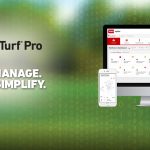Turf equipment is a golf course’s biggest investment. So when it comes to replacing old machines and selecting new ones, it’s important for the general manager, head greenkeeper and director of golf/PGA professional to be involved in the conversation.
At a time when reduced budgets continue to force golf courses to find ways to do more with less, it may be tempting to put purchases on hold until they’re absolutely necessary. But there’s a downside to that approach.
The Impact of Underinvestment
The cost of an equipment fleet increases as that equipment ages. Older equipment tends to require more maintenance and repair. Parts need to be replaced as they reach the end of their wear life. And every time a piece of equipment needs service, it means costly downtime. That’s why it’s important to set a budget and have a plan for equipment updates — rather than making one-off purchases as a knee-jerk reaction when machines go offline.
Why Plan Ahead?
The benefits of having a strategic equipment investment plan are substantial. For instance, every time you turn around a machine for a newer model, your course benefits from up-to-date technology. That could mean anything from improved cutting performance to increased fuel efficiency to added productivity. Any gains you can make in these areas can help you stretch your operating budget.
“As a distributor partner, we take an active role in helping our customers plan out their capital equipment expenditures by assessing their equipment needs while also respecting their budgets,” says Roon Hylkema, managing director at Royal Reesink N.V. “In many cases, we provide recommendations months, or even years, ahead of when they need to make purchases so that they are prepared to make proactive fleet updates when the time comes.”
According to Hylkema, there are clear benefits to having a proactive equipment plan in place. “This allows them to do two things: save money on increasing maintenance costs for aging equipment, and take advantage of the new technology in updated equipment that can contribute to an improved bottom line,” he says.
General Recommendations
At minimum, every golf course should have a capital equipment plan in place for the next five years. The plan should list every piece of equipment on the course, along with projected replacement dates for each item and the estimated cost for new equipment you are likely to purchase each year. This plan should be evaluated and updated annually.
During the fleet management planning process, it helps to have a good mechanic involved to ensure you understand the full cost of maintaining the machines in your fleet.
Making Purchase Decisions
Having a budget and a schedule are key parts of the plan, but how do you decide what to buy when it’s time to replace your machines? Here are a few things to keep in mind as you research your options:
• Total cost of ownership. There’s more to these decisions than the initial acquisition cost of the machine. In fact, two machines that cost roughly the same up front can have a very different total lifetime cost. Factors to consider and compare include:
– Parts inventory you must keep on hand
– Tax incentives that may be available for certain purchases, such as hybrid or electric technology
– Versatility – can the machine be used to do more than one task or for additional seasons by adding attachments and accessories?
– Operating costs – this includes differences in things like fuel efficiency or parts that don’t need to be replaced as often
– Maintenance costs – this includes service, parts, labor and downtime
– Ease of use and training requirements for operators/mechanics
– Availability of parts, service and support
• Maintenance requirements. The latest machines are more technically advanced than ever, and mechanics with the right electrical and mechanical repair skills are needed to maintain them. If you invest in new technology, you will also need to invest in your workforce or have a service contract (see below).
• Service contracts. Many distributors now offer service plans that take the burden off the golf course. If your maintenance shop is not staffed adequately, this may be a viable option.
• Hire or leasing. This is becoming an ever more popular option for many clubs, as the cost of finance is as low today as it has ever been. One of the big advantages with leasing a fleet of equipment is that you can fix your monthly costs over an extended period of time. This allows the club to manage their budgets and take into account any seasonality in the club’s income.
The inclusion of a service contract is also an attractive option for many clubs. Although you will be paying more for your fleet compared to direct purchase, the flexibility in cash flow management, as well as the ability to swap machines into or out of a lease programme, is considered by many to be a worthwhile benefit.
• Standardization. Building your fleet with machines from the same brand/manufacturer can have benefits such as:
– Reduced parts inventory due to common/shared parts
– Gains in service efficiencies and operator safety when staff are familiar with similar machines
– Reduced training time and cost
– Reliability – you’ll know what to expect from your prior experience with equipment performance, as well as distributor service and support
The general manager, head greenkeeper and director of golf/PGA professional of a course each have valuable perspectives and should be part of long-term planning — especially for equipment, the course’s largest investment.
In the end, a successful fleet management plan depends on seeing the big picture. The more you know about what goes into the lifetime cost and value of these machines, the better equipped you will be to weigh in on future decisions.




